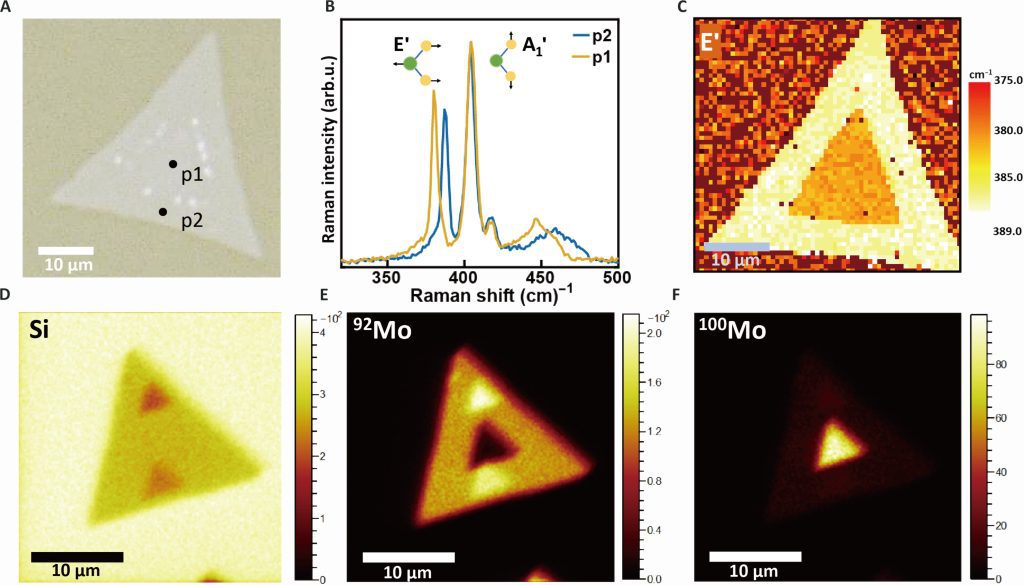
Isotope effects have received increasing attention in materials science and engineering because altering isotopes directly affects phonons, which can affect both thermal properties and optoelectronic properties of conventional semiconductors. However, how isotopic mass affects the optoelectronic properties in 2D semiconductors remains unclear because of measurement uncertainties resulting from sample heterogeneities. Here, we report an anomalous optical bandgap energy red shift of 13 (±7) milli–electron volts as mass of Mo isotopes is increased in laterally structured 100MoS2–92MoS2 monolayers grown by a two-step chemical vapor deposition that mitigates the effects of heterogeneities. This trend, which is opposite to that observed in conventional semiconductors, is explained by many-body perturbation and time-dependent density functional theories that reveal unusually large exciton binding energy renormalizations exceeding the ground-state renormalization energy due to strong coupling between confined excitons and phonons. The isotope effect on the optical bandgap reported here provides perspective on the important role of exciton-phonon coupling in the physical properties of two-dimensional materials.
This work was published in Science Advances.
[Y. Yu, V. Turkowski, J. A. Hachtel, A. A. Puretzky, A. V. Ievlev, N. U. Din, S. B. Harris, V. Iyer, C. M. Rouleau, T. S. Rahman, D. B. Geohegan, K. Xiao, “Anomalous isotope effect on the optical bandgap in a monolayer transition metal dichalcogenide semiconductor.” Sci. Adv. 10, eadj0758 (2024). https://doi.org/10.1126/sciadv.adj0758]